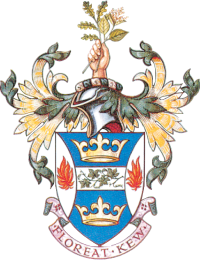With the size of France, landlocked Botswana extends over 1100 km form the north to the south and 960 km from the east to the west in southern Africa. Most of Botswana lies at an average elevation of 1000m. Much of the country consists of a vast and nearly level sand-filled basin characterized by scrub-covered savannas. A semi-arid expanse of wind-blown sand deposits, long sandy valleys and ridges stabilised by scrubby trees and bushes, the Kalahari, comprises 85% of Botswana, including the central and south-western region.
Gathering wild plant species is still a very important livelihood activity in the Kalahari environment, as there is an extremely diverse flora of edible plants, with over 400 plant species recorded as being useful to man. They offer cash income through direct sale and via making raw materials into new and diverse natural products for the national and international market. However, the sustainability of wild plant species is threatened by over-collecting and erosion caused by increased numbers of livestock. A close connection exists between rural communities and natural resources. The viability and sustainability of rural livelihoods depends upon the health of their respective natural environments, which in turn depends on both physical factors and management regimes.
The travel scholarship to Botswana focused on a propagation study in conjunction with the Millennium Seed Bank Project Botswana (MSBP Botswana), which was implemented by the Seed Conservation Department at the Royal Botanic Gardens, Kew (RBG, KEW) in September 2003. The MSBP Botswana is in partnership with non-governmental (NGOs) and governmental organisations in Botswana and targets and collects seeds of up to 400 threatened and useful species. The propagation study was based at the Veld Products Research & Development (VPR&D) nursery and focused on finding generative propagation methods to successfully regenerate eight utilitarian plant species, important to the rural communities of Botswana. VPR&D is responsible for developing propagation protocols of 40 utilitarian plant species. The propagation protocols will be the first step to regenerate over 4,000 plants of the 40 target species.
The experiment trialled various pre-germination techniques on eight utilitarian pants, Bauhinia petersiana, Berchemia discolor, Citrullus lanatus, Corchorus tridens, Cucumis africanus, Flacourtia indica, Harpagophytum procumbens and Senna italica, which are important to the rural livelihoods in Botswana. The generative propagation methods concentrated on various seed scarification methods, seed priming and the use of gibberellic acid.
The results of the trial show that the seeds of the various species need some kind of pre-germination treatment since the germination of the control was low. The germination of Flacourtia indica failed completely, more research needs to go into pre-germination techniques. The results for Harpagophytum procumbens should be considered as a success, even if the germination rate did not reach 70%. Since, no references to a successful regeneration or pre-germination technique for this species could not be found in the literature, internet and through personal correspondence with other organizations. Further trials should be done using a higher gibberellic acid concentration, which could influence the germination rate more positively.
However, the trial should be repeated for all species. More research needs to go into pre-germination techniques of the target species, to support another experiment. Horticultural institutes and NGO’s ought be questioned and included in such research, which would also improve the relations between the various organisations. Further propagation trials should include the soil, where the target species originate. This could prove unique mycorrhizal fungi relation associated with the germination of the seed. Since most of the species did not germinate at the ambient temperature higher germination temperatures are suggested. Seeds may germinate better at the end of spring going into the early summer, since the night temperature are not below 12ºC. However, this germination experiment was one of the first projects of its kind in Botswana.
Besides the propagation study, I had the opportunity to join a short VPR&D seed-collecting trip in association with the National Plant Genetic Resource Centre (NPGRC) to the northeast of Botswana. The purpose of the seed-collection trip was to collect seeds of the endangered tree Pterocarpus angolensis and various targeted utilitarian plants. As well as meeting and visiting the facilities of the other three MSBP Botswana partners, such as the National Herbarium and Botanic Garden.
Finally, the travel scholarship to Botswana was a great success and experience! Working with staff of VPR&D was great experience since I shared with them the daily challenges and problems of their work as well as getting an inside into the MSBP Botswana. I had the opportunity to familiarise myself with Botswana’s dryland ecosystem and its flora on a seed collecting trip to the north-eastern part of Botswana. The scholarship influenced positively my dissertation for the Kew Diploma, since I was able to make beneficial contacts as my dissertation investigates dryland conservation, including a case study of the Kalahari.
